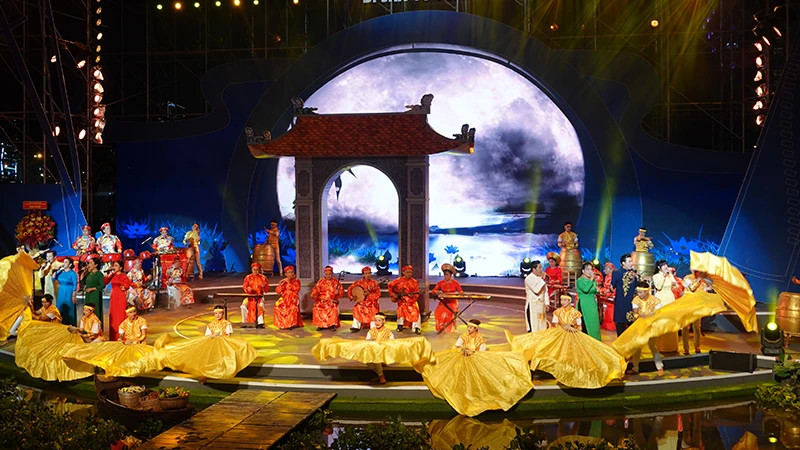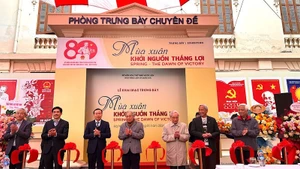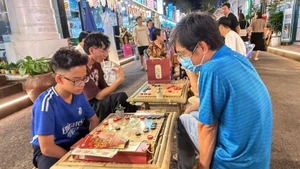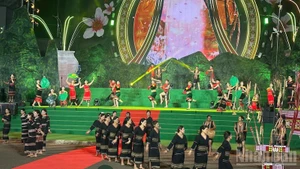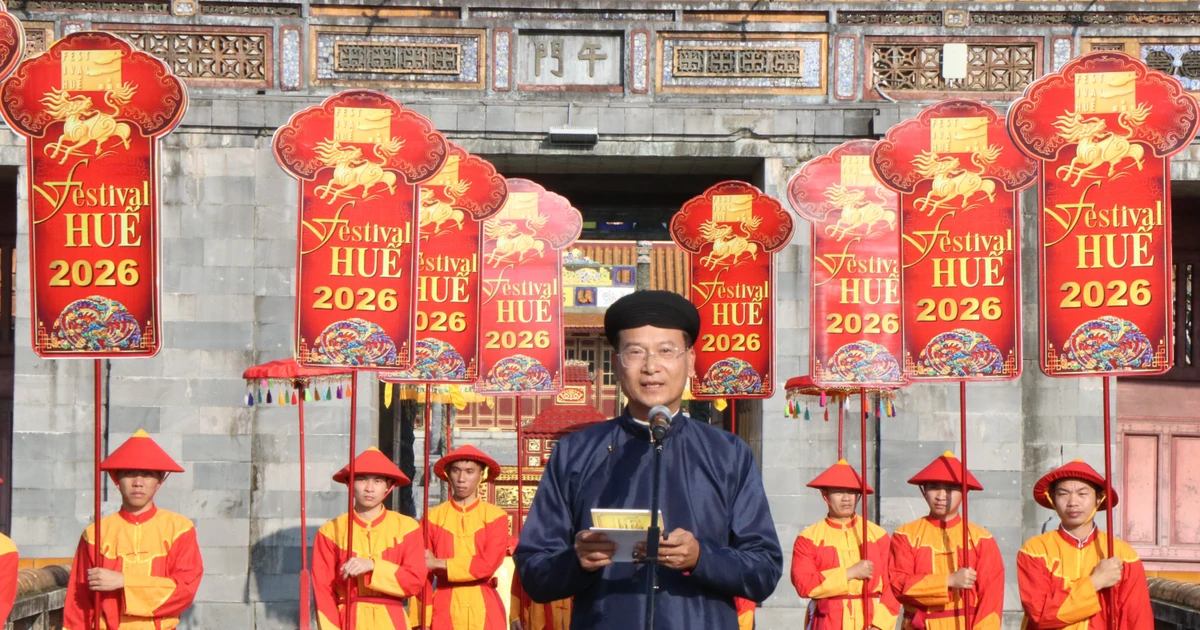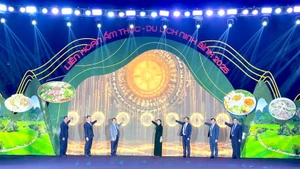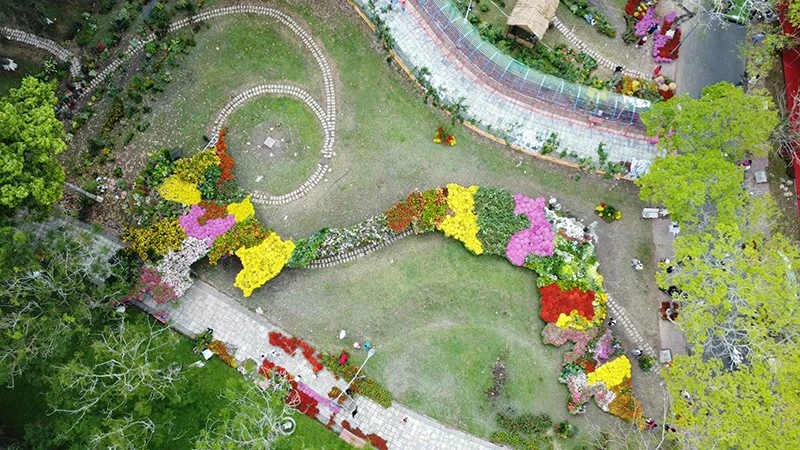Many targets have been set by the city to turn the cultural industry into an important manufacturing, service and creative economic industry. Optimistic signals from cinematic, music, cultural and tourism activities have shown that the city is determined in its goal of developing a strong cultural industry in the near future.
With its strengths as an economic, educational, and science-technology centre, Ho Chi Minh City has many advantages for developing cultural products and services, cultural industry, and creative industry. In particular, identifying strengths will help the city successfully implement the proposed Project on cultural industry development.
Identifying strengths for the development of cultural industry
In the last days of 2023, Ho Chi Minh City has become even more bustling and vibrant, with many cultural and tourist events. Notably, during the days celebrating Christmas, the atmosphere in the city got "hotter" with the HOZO Super Fest 2023, from December 22-24. More than 150,000 audience members immersed themselves in a unique music space through performances by ten international artists, music groups and 14 Vietnamese representatives.
According to Nguyen Thi Thanh Thuy, Deputy Director of Ho Chi Minh City Department of Culture and Sports, the HOZO Super Fest 2023 is part of the plan to effectively implement the Project of “Organising outstanding festivals, cultural and sports events in the City from 2020 to 2030”, aiming to promote the investment in developing the cultural industry and stimulating tourism in the City. The festival is one of the leading projects that fully meet the city's policy of creating new cultural brands, strengthening its cultural development in parallel with the economy.
Under the Project on cultural industry development, Ho Chi Minh City has been focusing on achieving the main targets of eight industries: cinema, performing arts, fine arts, photography, exhibitions, advertising, cultural tourism and fashion. Among them, the advertising, cinema, performing arts, and exhibition industries have been the strengths in recent years.
According to the assessment of the City People's Committee, the contribution of cultural industries to GRDP has been increasing, demonstrating the industry's position in the city's economy. Specifically, the contribution of cultural industry production to GRDP accounted for 3.77% in 2010 and 3.88% in 2019. Advertising recorded the largest contribution rate, and cinema was also a strong area in developing the cultural industry.
Ho Chi Minh City is considered one of the country's largest centres in terms of film production facilities and market. The establishments operating in this field have increased steadily over the years, from 282 in 2010 to 674 in 2015 and 834 in 2019. The establishments operating in the film industry mainly belong to non-state enterprises, accounting for more than 98%.
To promote the film industry, the city has planned to organise many events in the near future. The first Ho Chi Minh City Short Film Festival, held successfully this year, was considered a fundamental step to realising that dream. The festival will be held biennially to encourage creativity and develop potential in short film production.
Vice Chairman of Ho Chi Minh City People’s Committee Duong Anh Duc said the city will host the first Ho Chi Minh City International Film Festival in 2024 and the 24th Vietnam Film Festival in 2025. These consecutive and comprehensive activities are expected to concretise the city's film industry development strategy.
Effectively utilising all resources
The Ho Chi Minh City’s Project on cultural industry development sets a goal to develop the cultural industry into an important manufacturing, service and creative economic sector, with clear development both in quality and quantity, positively contributing to economic growth and creating jobs through the production of more diverse and high-quality cultural products and services, meeting the demand of creativity, enjoyment, and cultural consumption. The city also aims to establish the city's brands of cultural products and services and join the creative network of the UNESCO Creative Cities Network, contributing to preserving and promoting cultural values and enhancing the position of culture and people of Ho Chi Minh City in the region and the world.
In particular, the specific target is to develop Ho Chi Minh City into a cultural industry centre of the country and the region, promote investment in appropriate resources, encourage socialisation, and focus on developing several industries of the city’s strengths.
The city also orients and gradually develops the performing arts, photography, and fine arts industries to become important services, positively and effectively contributing to the City's socio-economic development. At the same time, typical cultural products and services of eight cultural industries will be developed.
The City has developed a plan to join the creative network of the UNESCO Creative Cities Network in the field of cinema, which is one of the advantages and strengths of the cultural industry in the City. Assoc. Prof. Dr. Huynh Quoc Thang from the University of Social Sciences and Humanities, under Vietnam National University – Ho Chi Minh City, stressed that implementing cultural industry or UNESCO Creative City aims to build local brands of the cities around the world.
Therefore, the City should consider and clearly define its local brand to focus on building and developing a "Creative City" towards developing the cultural industry and promoting the city's strengths and unique identity.
Dr. Nguyen Thi Hau, General Secretary of the Ho Chi Minh City Historical Science Association, said the goal of the Project on cultural industry development should be towards a "top culture" that a big city must have. It is the pinnacle of artistic quality, facilities and human resource level. The project needs to focus on typical cultural forms imbued with the identities of Ho Chi Minh City and the South, such as Don Ca Tai Tu (traditional musical art form of the South) and Cai luong (Reformed Opera). Therefore, the City should soon build specific cultural products of the region to create unique highlights in cultural tourism development. At the same time, the system of cultural heritage works in the city needs to be planned, renovated, and included in sightseeing tours.
Cultural industry has a huge potential for the City. If it combines well with the tourism industry, it will attract a large number of domestic and international visitors. According to many experts, the City needs to develop, supplement and perfect mechanisms and policies related to infrastructure development, production technology, tax incentives, and capital investment to attract more businesses to invest in the cultural industry.
Public-private partnership is a method that many countries are interested in, and this method has been successful in some localities around the country. Ho Chi Minh City should pay attention to this method because it will increase the linkage between public and private sectors and attract private businesses to contribute finance, technology, and sponsorship to develop the cultural industry.
At its recent 13th session, the 10th Ho Chi Minh City People's Council for the 2021-2026 tenure approved many policies to implement Resolution No. 98/2023/QH15 of the National Assembly on piloting specific mechanisms and policies for the development of Ho Chi Minh City, including the Resolution promulgating a list of projects to call for investment in the form of public-private partnerships in the fields of health, education and training, sports and culture. This is a necessary first step for Ho Chi Minh City to remove obstacles and make its cultural industry development as desired.
